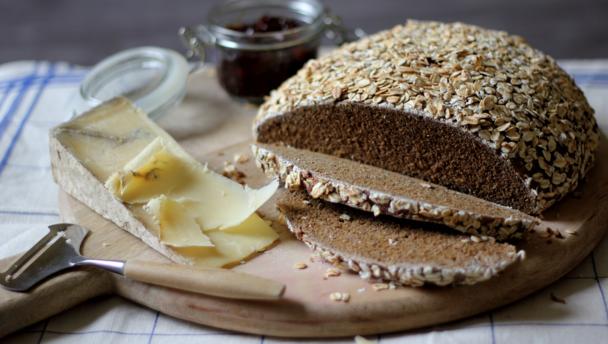

By Paul Hollywood
Rye flour contains enough gluten to make a yeasted loaf on its own, and tends to produce dense, dark, richly flavoured bread. It's often mixed with wheat flour to produce a lighter style of loaf. Rye flour's intensely fruity flavour is delicious incorporated into fruited cakes and sweet quickbreads such as scones. There are not many uses for wholegrain rye, although kibbled rye makes a good addition to multi-seeded loaves. Rye flakes are good added to muesli.
 Rye crispbread
Rye crispbread
 Rye bread
Rye bread
 Really good rye bread
Really good rye bread
 Roquefort and walnut loaf
Roquefort and walnut loaf
Look for a grey colour and close texture to the crumb; usually the darker the grey the more rye flour the bread contains. The colour is difficult to reproduce with additives, so dough with a low percentage of rye is often mixed with dark malt (and occasionally coffee, black treacle or cocoa) to give the crumb a more robust appearance or to shift the colour away from the slightly less appetising grey. To be certain that a bread is made with 100% rye, read the label to check whether any other flours are listed.
Article by Dan Lepard
Type the ingredients you want to use, then click Go. For better results you can use quotation marks around phrases (e.g. "chicken breast"). Alternatively you can search by chef, programme, cuisine, diet, or dish (e.g. Lasagne).